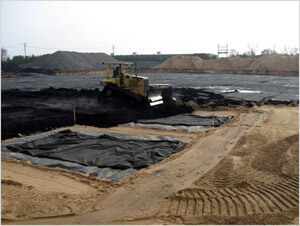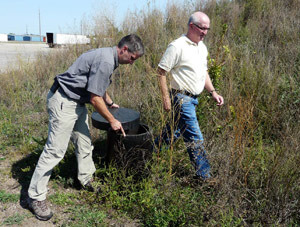After years of digging—literally—Waupaca Foundry and the TRC Engineering Services team have uncovered a potentially valuable new role for foundry by-product.
Beyond the Bottom of Landfills
Bryant Esch | Waupaca FoundryWe all remember how well foundry by-product worked as landfill cap, but the next step was to confirm its usefulness as a landfill liner, which would have implications far beyond landfills. If foundry by-product proved a worthy landfill liner, it could mean a place for it in construction, agriculture, and elsewhere. The team once again put the material to the test. What would it take to be at the bottom of the heap?
In January of 2011, they dug two test pads, two 20 by 25 foot pits side-by-side. One was lined with native clay, the other with foundry by-product. Each had its own lysimeter (a device for collecting moisture from under soils) at the bottom to measure any water allowed to permeate through the material. If foundry by-product held up as well as native clay, it would be elevated beyond its traditional use as geotechnical fill.

For two years the team monitored the test pad areas. In January of 2013, the trial period was over and the team waits for spring weather to see how the foundry by-product performed.

The foundry by-product appears to be an impermeable layer, refusing to let water pass through to the lysimeter. Esch and the TRC team are currently waiting for the DNR to sign off on the material. Only when the frost is out of the ground can an official verdict be reached. If all goes as expected, we might start seeing foundry by-product in more and more places. Esch believes this could be the start of something big for Waupaca Foundry's clay-rich by-product.
Where once we saw it as great for creating hills and leveling roads, we now get a glimpse of how valuable this impermeable material might be. Soon foundry by-product could pop up in native clay's old haunts: manure pits, construction, agriculture; or anytime you need a water barrier. Studies like this one are but a step in a long line of earth-friendly and innovative moves. If the DNR approves, a new and valuable use may have been unearthed for the by-product. We won't stop digging for more.
If this works out, we have a tried and proven impermeable layer that can be used across multiple industries.

